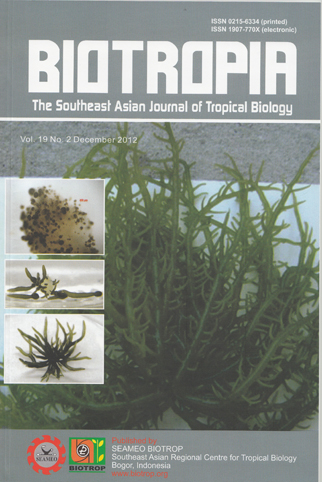
Tags
VEGETATION OF LOWLAND TROPICAL FOREST (WEST PAPUA), HUMAN PRESSURE, FOOD AVAILABILITY AND WALLABY (Dorcopsis muelleri) PRESENCE
Content Language : English

The presence of Dorcopsis muelleri in different habitats and related vegetation types has been studied in lowland tropical vegetation in the northern Part of Manokwari, West Papua. Four habitat types comprising 6 plant communities could be distinguished:
1. Grassland, Imperata cylindrica - Ipomea aquatica community;
2. Open forest:
a. open forest transitional to grassland, Ficus robusta - Dendrochide sp. community,
b. open forest after logging, Musa paradisiaca – Callamus longipina community,
c. open forest regenerated after logging, Diospyros hebecarpa-Lepinopsis ternatensis community,
d. open forest on rocky soil, regenerated after logging, Smilax malacensis-Pandanus tectorius community;
3. Undisturbed (“primary) closed forest, Sommeria leuchophylla–Paraltropis glabra community.
The forest wallaby has especially been noted in grassland, in open forest with only little logging activity and in undisturbed closed forest. It was however not registered from the forests with clear logging influence. D. muelleri appears to be very sensitive to human disturbance. Our results indicate that vegetation structure, food plant availability and possibly also vegetation composition is less important than human disturbance. There is a strong negative relation between on one hand presence of the forest wallaby and on the other hand logging, distance to villages and hunting.
Link

This work is licensed under a Creative Commons Attribution-NonCommercial-NoDerivatives 4.0 International License.
